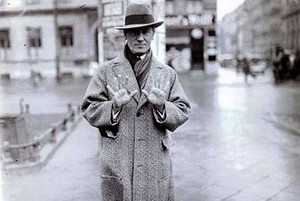The Madonna of the Sleeping Cars

- SUBSCRIBE
- ALREADY SUBSCRIBED?
BECOME A BONJOUR PARIS MEMBER
Gain full access to our collection of over 5,000 articles and bring the City of Light into your life. Just 60 USD per year.
Find out why you should become a member here.
Sign in
Fill in your credentials below.
 Maurice Dekobra?
Maurice Dekobra?
His name is now almost completely forgotten, but in 1927 he published a novel called “The Madonna of the Sleeping Cars” that sold a million copies in France. (It was eventually published in 24 languages.) In 1928, The New York Times described him as “the biggest seller of any living French writer — or dead one either.” Fifteen of his novels became films. (“Madonna” was filmed twice.) Over his career, he sold 15 million books in 32 languages, and his kind of writing — a slick blend of journalism and high-society intrigue — acquired a brand name: dekobrisme.
“The Madonna of the Sleeping Cars” went out of print in 1948.
It’s finally back. So let me introduce you.
Maurice Dekobra (1885-1973) began his career as a translator (Daniel Defoe, Jack London, Mark Twain). In the early 1920s, he was a journalist and foreign correspondent. His fiction reflects his training — it’s grounded in the news, is briskly paced and has an unusually tart point-of-view.
The plot, as these things go, is simple. Lady Diana Wynham is a London widow known for her beauty (“the type of woman who would have brought tears to the eyes of John Ruskin”). She is just as well known for her unabashed amorality. Presented with a list of her lovers, in chronological order, she has only one correction: “Excuse me, but they were contemporaneous.” [To buy the paperback from Amazon, click here. For the Kindle edition, click here].
Lady Diana is about to be ruined financially. Her sole hope of salvation is l0,000 acres of Russian oil land that her late husband, the English ambassador to the court of St. Petersburg, received as a gift from the government of Nicholas II. It is — in 1920s money — worth 50 million dollars.
The bad news: Russia’s Bolshevist government has confiscated all foreign property.
The good news: Leonid Varichkine will get it back for Lady Diana in exchange for “one night” of love.
What are a few illicit hours to a woman “who could never be happy without a great deal of money?” But Lady Diana is as clever as she is amoral. She proposes a better deal.
“Madonna” starts in London, makes stops in Berlin, an Arabian prison and a yacht in the Mediterranean, with a melodramatic climax in a castle in Scotland. In addition to distance, lessons are learned: a Communist can be converted to capitalism for less money than you might think, and “passing infractions of fidelity” are “trivial.”
I’ve dipped into a few other Dekobras. They’re not awful. But “Madonna” is clearly his showpiece. It’s a fun, terse, story that is as convincing about London drawing rooms as it is about Russian execution chambers. And he makes you care about Lady D.
More in book, book review, Maurice Dekobra


